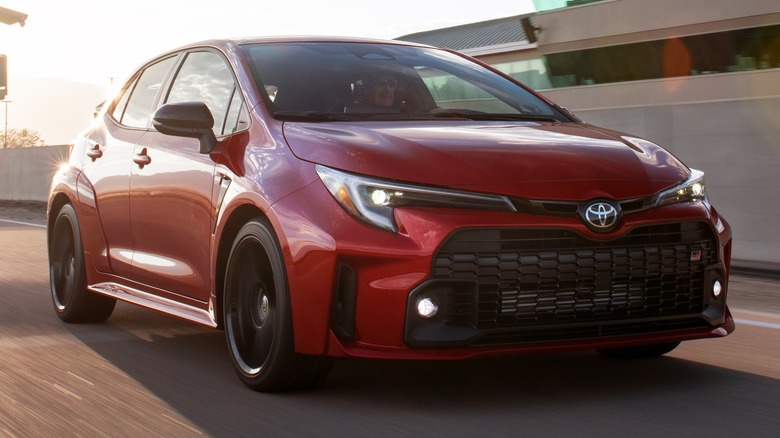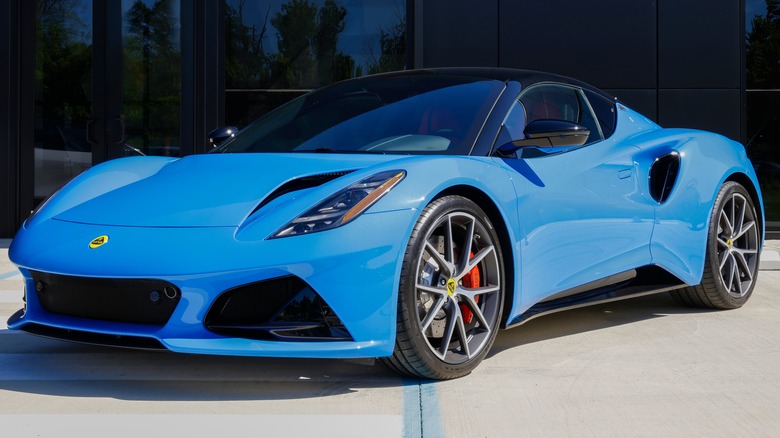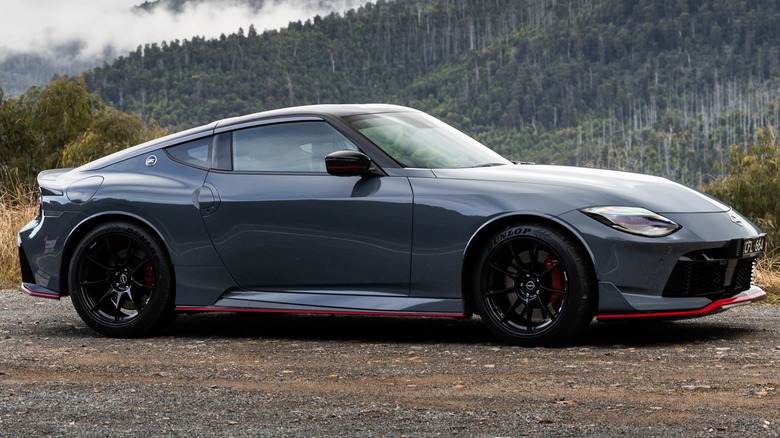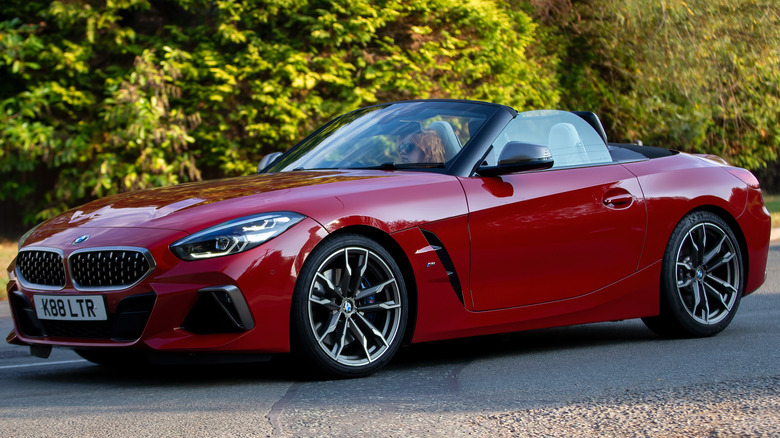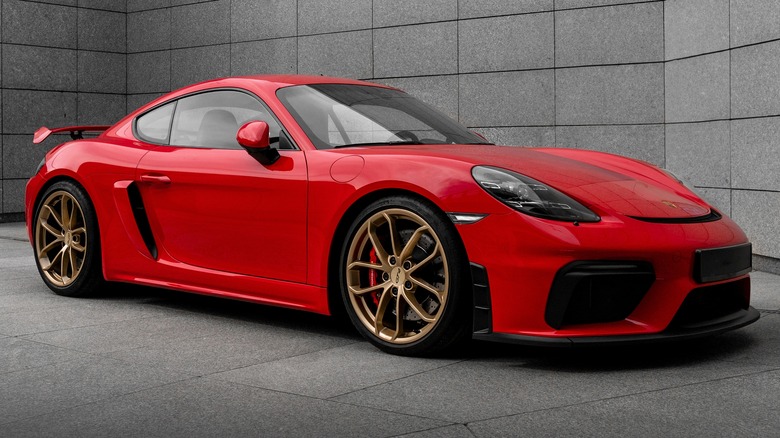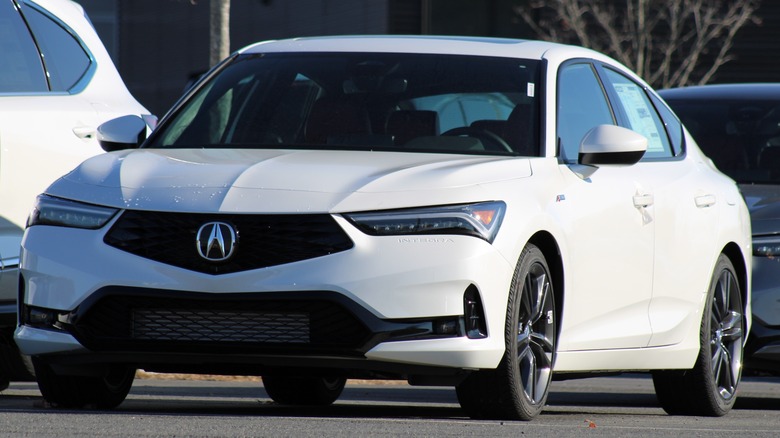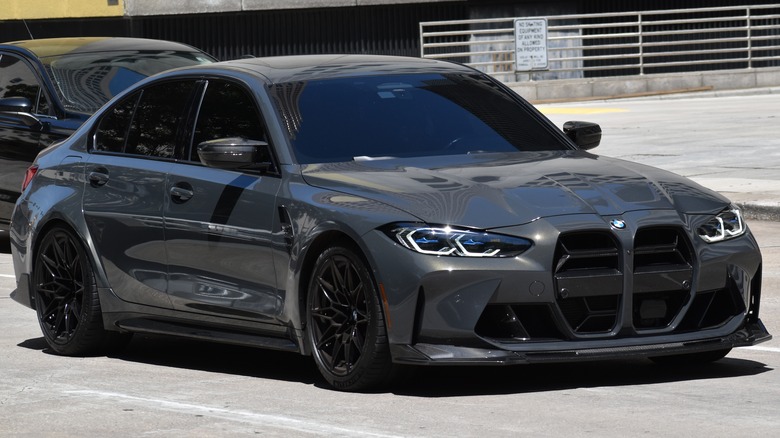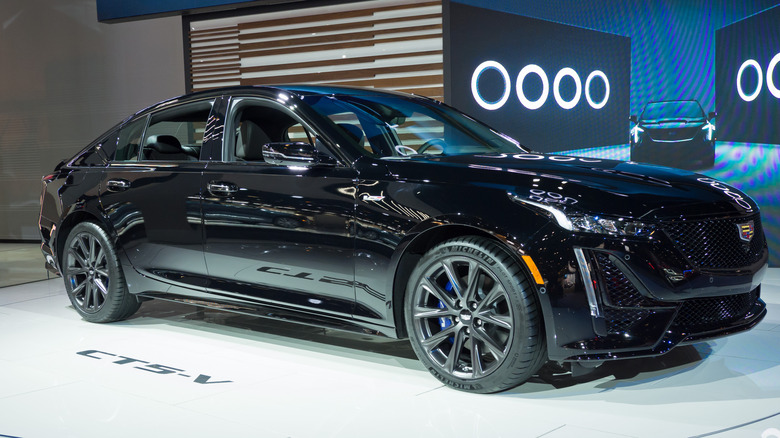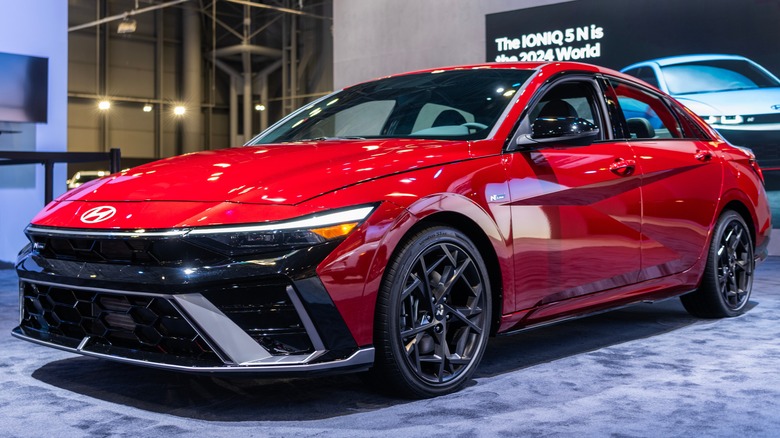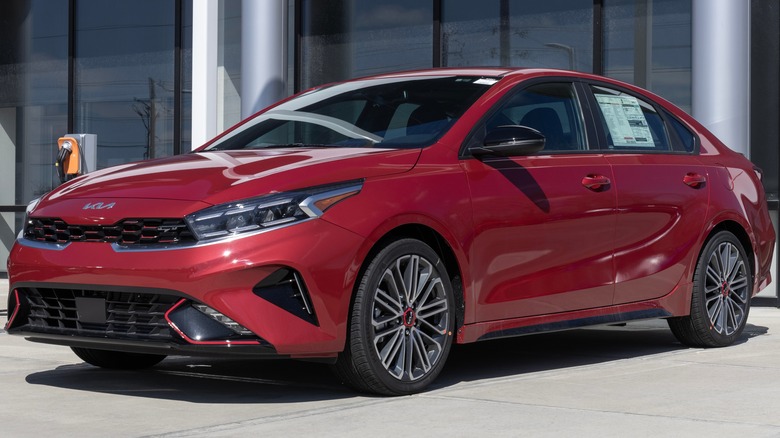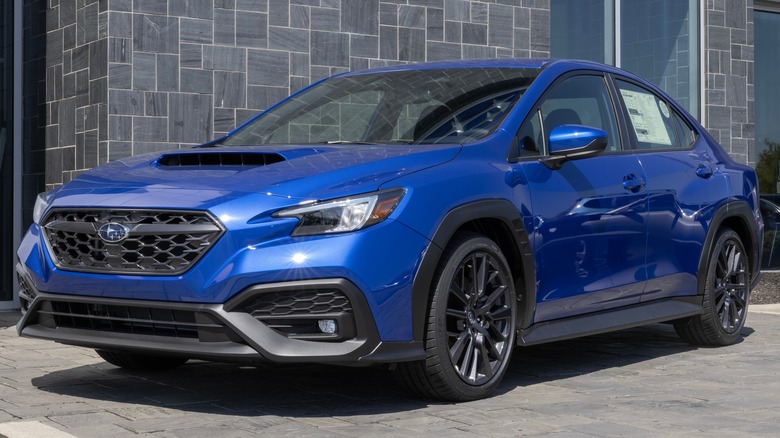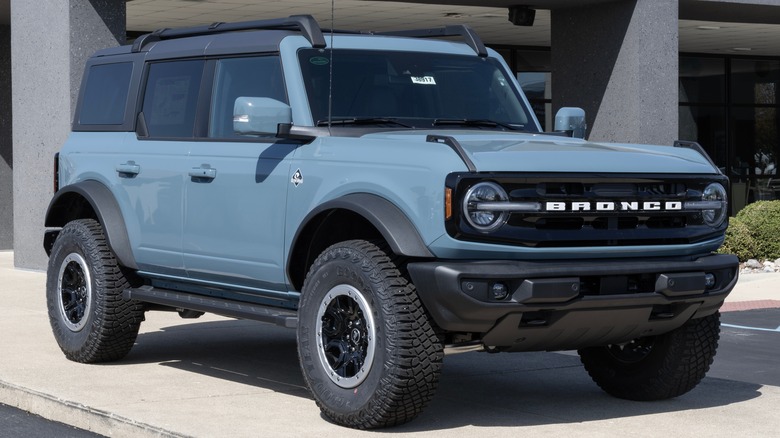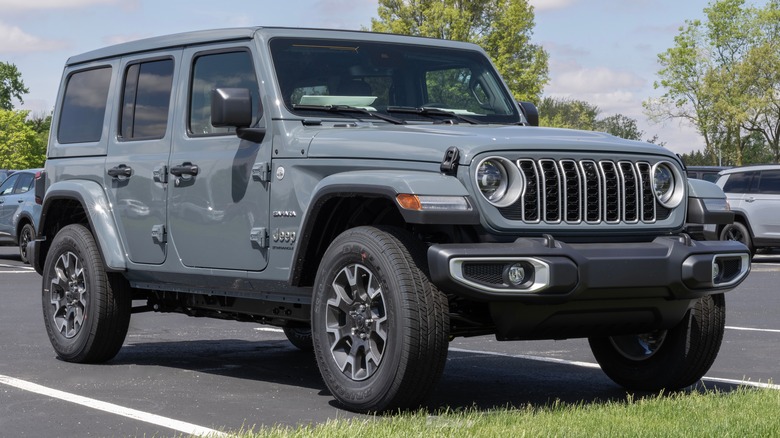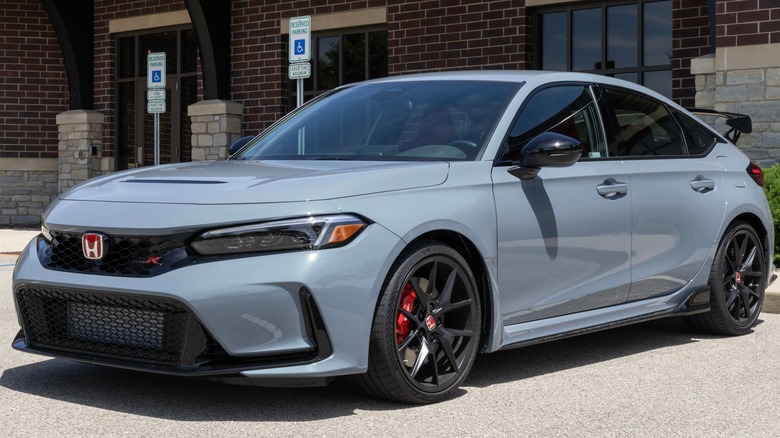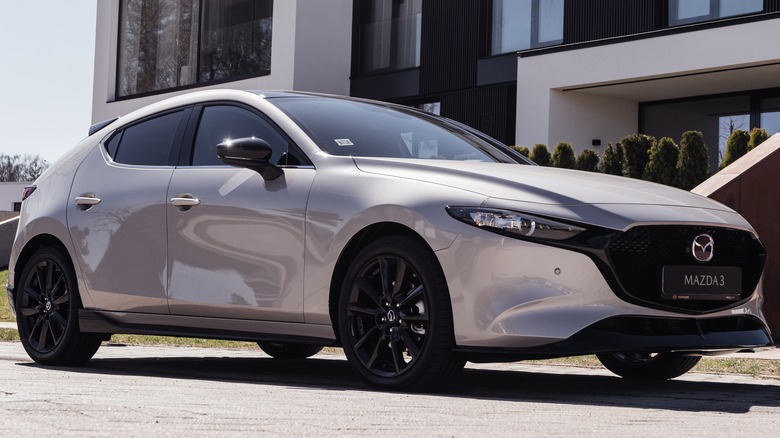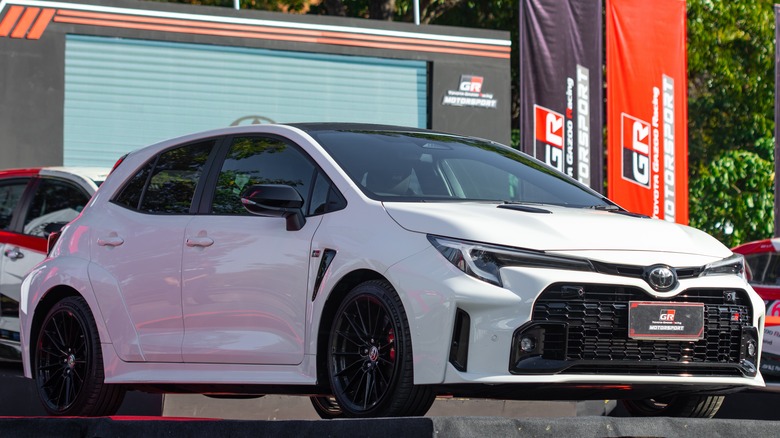15 New Cars Still Available With A Manual Transmission
Gone are the days when manual transmissions were faster than their automatic siblings. Today's lightning-fast automatics, like Porsche's PDK, can outperform even the most skilled driver. While automatic transmissions make fantastic track machines by shaving precious seconds off lap times, manual transmissions offer a different kind of appeal.
For driving enthusiasts, there's something irreplaceable about the satisfying clicks and the feeling of being in complete control with three pedals and a stick. It's not about efficiency but the pure connection between car and driver.
Fortunately, the manual isn't dead. Automakers like BMW, Acura, Honda, and Toyota are keeping the flame alive, offering them in a wider range of vehicles – from sports cars to SUVs to hatchbacks to sedans. Today, we'll explore this thriving niche, showcasing new cars that let you command every shift. This isn't an exhaustive list, but it highlights the exciting options available for those who crave the engaging world of the manual transmission.
Lotus Emira
Lotus has been producing iconic cars for over seven decades, including models like the Cortina, Esprit, Elise, Evora, and Exige. Not only have these models been among the most beautiful, but also the best handling, making them a thrill to drive. The Emira is one of the latest sports cars from Lotus, succeeding the Evora GT and competing with models like the Porsche 718 Cayman/Boxster and Toyota GR Supra. The Emira is a mid-engine sports car, drawing its design inspiration from the brand's Evija hypercar. It builds on the legacy of predecessors like the Evora, Exige, and Elise while also introducing newer technology, more comfort, and better functionality.
The Emira has two powerful powertrains, one of which is an AMG 2.0-liter turbocharged four-cylinder. The second engine is a familiar Toyota-sourced 3.5-liter supercharged V6, which was loved in the Evora and Exige. As standard, the base AMG engine pairs with an eight-speed dual-clutch automatic, while the V6 pairs with either a six-speed manual or six-speed automatic transmission. For most enthusiasts, the six-speed manual would be the way to go; however, our Lotus Emira review noted that the clutch and shifter were heavier, making the Emira trickier to maneuver in traffic.
Nissan Z
Nissan's Z lineup has been around since the 1960s, offering enthusiasts stylish-looking sports cars with exhilarating performance. Over the years, there have been seven generations of the Z, with each featuring iconic models like the 300ZX, 350Z, 370Z, and the current generation Z. Nissan introduced the revised seventh generation Z in 2023, promising precision, speed, and safety. To achieve this, the Z carried over some chassis elements from the predecessor while also introducing new features like electronic power steering for exceptional steering feedback. Like its bigger sibling, the GT-R, the Z got a 3.0-liter twin-turbocharged V6 engine, producing more power than the predecessor's naturally aspirated powertrain.
Nissan made additional changes to the drivetrain, pairing the V6 with a nine-speed automatic instead of the 370Z's seven-speed. This new transmission helped with faster and smoother gearshifts, according to Nissan. For stick shift lovers, Nissan also offered a six-speed manual transmission as a no-cost option. This transmission had SynchroRev Match with no-lift shift and an EXEDY high-performance clutch. In our review of the 2023 Nissan Z, we found the clutch heaver, making the Z tricky to modulate during commutes. However, veering off into more entertaining roads woke up the Z, making it more fun and communicative than its predecessor.
BMW Z4
The Z Series has been BMW's roadster collection, focusing solely on driving pleasure. The Z nameplate stood for "Zukunft," the German word for future. Due to this, these models were characterized by their visionary and innovative specifications. These models followed the footsteps of legendary roadsters like the 507 and 328. Over the years, the Z Series lineup has had multiple iconic models, including the Z1, Z8, Z3, and the Z4. The latter has been around for three generations, with the most recent version being reintroduced in 2018 for the 2019 model year. For its third generation, BMW developed the Z4 alongside the Toyota GR Supra, both having highly distinctive looks and potent powertrains.
Upon launch, both models were only available with an eight-speed automatic transmission powering the rear wheels. However, Toyota was the first to give in to the outcries of its enthusiasts, fitting the GR Supra with a six-speed manual transmission in 2023. A year later, BMW introduced the six-speed manual for the Z4. Both models paired the manual with the more potent 3.0-liter inline-6, with BMW incorporating M-specific parts in the gear shafts. To make it better than the automatic transmission roadsters, BMW equipped the manual transmission Z4 with a torque vectoring sport differential, a rear axle setup from the M240i, retuned adaptive dampers, and stiffer front anti-roll bar mounts, helping better its handling.
Porsche 718
Porsche introduced the 718 in 1957 as the Porsche 550 Spyder's successor. At the time, the 718 was a lightweight, mid-engine racing sports car. Like the modern 718, it had a reputation for handling, speed, and agility, making it a motorsports success to win races like the 1958 12 Hours of Sebring and 24 Hours of Le Mans. Porsche, however, retired the 718 nameplate in 1965 before reviving it in 2016 for its 718 Cayman and 718 Boxster sports car. With this new generation of the 718, Porsche used turbocharged four-cylinder engines in favor of the flat-six powertrains of the predecessors.
Nowadays, the 718 Cayman and Boxster have multiple trims, some even featuring Porsche 911's flat-six engine. Despite being smaller and less pricey than the 911, the 718 Cayman and Boxster models have powerful powertrains. The base model uses a 2.0-liter turbocharged flat-four with 300 hp and 280 lb-ft of torque. Additional engine options include a 350-hp 2.5-liter turbocharged flat-four and a 394-hp 4.0-liter naturally-aspirated flat-six. Porsche pairs these engines with a six-speed manual transmission; however, there's also Porsche's optional seven-speed PDK automatic. While both options are great, the manual makes you an integral part of the drive, further improving your driving experience.
Acura Integra
Acura launched the Integra in 1986, and since then, it has grown to become an automotive icon and one of the models that helped cement Acura's position in the luxury performance segment. The Acura Integra was initially available as a three-door or five-door hatchback. However, over the years, it morphed into a high-performance three-door hatchback with a storied racing history.
After a two-decade hiatus, the 2023 Acura reemerged with a modern twist. This fifth-generation iteration marked the arrival of the first turbocharged Integra, offered exclusively as a sleek five-door hatchback. Borrowing some DNA from its Honda Civic cousin, the Integra boasts a sportier aesthetic and a premium cabin, helping it compete with European rivals like the Audi A3 and BMW 2 Series.
Power comes in two flavors: a 200-hp 1.5-liter four-cylinder and a 320-hp 2.0-liter turbocharged four-cylinder. These engines pair with a close-ratio short-throw six-speed manual transmission with a built-in rev-matching function. This dynamic transmission delivers a sportier feel, channeling power to the front wheels through a helical limited-slip differential.
BMW M3
Born on the racetrack, BMW M wasn't content to leave its fire-breathing machines confined to weekends. Established in 1972, this performance division gifted the world icons like the BMW 3.0 CSL. Today, BMW M offers a diverse lineup, from the M2 sports coupe to the hybridized XM SUV. The BMW M3 is one of the brand's most celebrated offerings, with over three decades of high-performance heritage. Now in its sixth generation, this sports sedan squares off against rivals like the Alfa Romeo Giulia Quadrifoglio, Mercedes-AMG C 63, and Cadillac CT4-V Blackwing.
It gets power from the S58 engine, a 3.0-liter turbocharged straight-six, with 473 hp in the base variant. This potent engine powers a plethora of other BMW M cars, including the M2 and M4. These vehicles get a six-speed manual transmission with short and precise gear shifts. BMW even equips the transmission with a Gear Shift Assistant, which helps match engine revs during downshifts. While the M3, M2, and M4 models all get an eight-speed automatic transmission, the manual boasts a 50-pound weight saving, further improving front-to-rear weight distribution.
Cadillac CT5-V Blackwing
Cadillac's V series Blackwing lineup consists of two luxury sports sedans: CT4-V Blackwing and CT5-V Blackwing. These models leverage the brand's racing heritage to offer track-capable Cadillacs. According to Cadillac, they represent the pinnacle of the brand's craftsmanship, performance, and technology. Today, the CT5-V Blackwing is one of the most powerful and fastest Cadillac production vehicles, boasting a top speed of over 200 mph and a quick 0 to 60 mph dash of 3.4 seconds.
The CT5-V Blackwing uses a 6.2-liter supercharged V8 engine with 668 hp and 659 lb-ft of torque. The engine pairs with a six-speed manual transmission or a 10-speed automatic. While both transmissions are great for aggressive driving, the manual boasts unique gear cut changes for better durability and quietness.
Hyundai Elantra N
Hyundai's N division, named after Namyang district in South Korea (the birthplace) and the Nürburgring (home to Hyundai's technical center), cranks out high-performance vehicles. Established in 2012, it breathed fire into models like the Veloster, Elantra, and even the electric Ioniq 5. While the Veloster has since exited the scene, the flame burns bright in the Elantra N and the Ioniq 5 N EV.
The Elantra N transforms the everyday Elantra sedan into a compact sports hero. It packs a more potent engine and a sharper suspension, making it a thrilling sports sedan that can rival models like the Honda Civic Type R, Volkswagen Golf R, and Toyota GR Corolla. Hyundai launched the Elantra N in 2021, and since then, it has continuously evolved, with the 2024 model boasting improved technology for comfort, enhanced safety, and even tighter handling.
Powering the Hyundai Elantra N is a 2.0-liter turbocharged four-cylinder engine with 276 hp and 289 lb-ft of torque. Borrowed from its Veloster N cousin, this energetic powertrain gets an extra kick from Hyundai's N Grin Shift (NGS) feature, a temporary power boost to 286 hp. The standard transmission is a close-ratio six-speed manual, but for those who prefer automatics, an eight-speed option is available.
Kia Forte
Kia introduced the Forte in 2010 as a compact sedan with various features and affordable trim levels. Today, the Forte maintains its focus with a stylish exterior and a starting MSRP of only $19,990. Despite its budget-friendly price tag, the Forte boasts a generous spread of standard equipment, including full power accessories, daytime running lights, automatic headlights, cruise control, remote keyless entry, and a suite of advanced driver assistance systems like forward collision warning, lane departure warning, and automatic emergency braking.
The Kia Forte has two engine options: a 147-hp 2.0-liter four-cylinder engine and a 201-hp 1.6-liter turbocharged four-cylinder engine. The base engine comes standard with a continuously variable automatic transmission (CVT). However, for those who crave a more engaging experience, the turbocharged engine gets a quick-shifting seven-speed dual-clutch automatic (DCT) with steering wheel-mounted paddle shifters. Kia also offers a six-speed manual transmission for anyone yearning for a three-pedal driving experience.
Subaru WRX
In 1992, Subaru launched the WRX, a compact pocket rocket born from Subaru's rally dominance. The "World Rally Experimental" moniker hinted at the WRX's purpose, quickly helping it become a legend by winning multiple rally championships and even the grueling 24-hour Nürburgring race. Nowadays, the Subaru WRX is a performance powerhouse that rivals compact cars like the Hyundai Elantra N, Toyota GR Corolla, Volkswagen Golf, and Honda Civic Type R.
While it may lack the outright muscle of some competitors, the Subaru WRX boasts a reasonably powerful 2.4-liter turbocharged Boxer engine with 271 hp and 258 lb-ft of torque. As standard, Subaru pairs this engine with a six-speed manual transmission with optimized gear ratios for a refined shift quality. The WRX also has an automatic Subaru Performance Transmission (SPT) on select trims.
Ford Bronco
Debuting in 1965, the Ford Bronco carved a niche alongside its iconic stablemate, the Mustang. This off-road adventurer was Ford's first SUV, spawning multiple variations, including the doorless Bronco Roadster. After nearly three decades of production, the Bronco met its demise in the '90s, bowing out due to sales rather than the notoriety of O.J. Simpson's chase (as Ford claims). In its place, the Expedition emerged to rival the dominance of the Chevrolet Suburban and GMC Yukon.
Ford revived the Bronco nameplate in 2021, marking the sixth generation and igniting the competition with the Jeep Wrangler. Offered in two- and four-door configurations, the reborn Bronco fit squarely within the mid-size SUV segment. Under its hood were two muscular engine options: a 270-hp 2.3-liter EcoBoost four-cylinder and a 310-hp 2.7-liter EcoBoost V6. Ford paired these engines with either a seven-speed manual or a 10-speed automatic transmission, allowing the Bronco to conquer diverse terrains with confidence.
Jeep Wrangler
In 1986, Jeep's heir to the WWII CJ, the Wrangler, rumbled onto the scene. This successor quickly carved its own path, transforming from a capable off-roader into a global icon. Initially a two-door convertible, the Wrangler embraced practicality in 2007 by introducing a four-door variant, further propelling its success. Each of the Wrangler's four generations has pushed the boundaries of off-road capability, solidifying its reputation as a legend.
Jeep introduced the Wrangler JL in 2018, further modernizing the legend by offering a fresh design with the brand's renowned 4x4 prowess intact. Power came in a trio of fuel-efficient options: a 2.0-liter turbocharged four-cylinder, a 3.6-liter Penstar V6, and a 3.0-liter EcoDiesel V6. Notably, the base trims proudly sported a six-speed manual transmission, boasting revised gear ratios for superior crawling, a smooth cable operation, and a revamped gear pattern. These upgrades translated to a quieter cabin and a vibration-free shifting experience. Jeep also offered a new eight-speed automatic with two overdrive ratios for improved fuel economy.
Honda Civic Type R
Honda's fire-breathing Type R badge has been synonymous with factory performance since its debut in the iconic NSX. Originally a track-focused weapon, it scorched its way onto the Accord and Integra and now resides in the heart of the Civic. This high-octane hatchback competes against rivals like the Volkswagen Golf and the Toyota GR Corolla, offering a pulse-pounding experience for driving purists.
Unleashed in 2017, the latest Honda Civic Type R had a 2.0-liter turbocharged four-cylinder engine with 306 hp in the U.S. Beneath the shifter sat a close-ratio six-speed manual transmission paired with a helical limited-slip differential. The combination translated to direct driver connection and exhilarating control. To conquer the corners, Honda equipped the Civic Type R with a multilink independent rear suspension and a dual-axis front setup. Thanks to Honda's clever engineering, these improvements helped the Civic Type R snatch the Nürburgring front-wheel-drive record with a blistering lap time of 7:43.80.
In 2020, Honda upped the ante, introducing driver assistance tech like the Honda Sensing suite and a retuned adaptive damper system for a more composed ride. Nowadays, the Civic Type R uses a more powerful version of the K20C1 engine, producing 315 hp. Gearshifts are sharper, too, thanks to a revised rev match system and a lighter flywheel.
Mazda3
The Mazda3, also known as Mazda Axela in some markets, is a compact car that has been in production for four generations since 2003. Since its debut, this Protegé successor has carved a niche as a fun-to-drive compact car, offering a choice between sedan and hatchback body styles. In its first generation, the Mazda3 shared its platform with the Ford Focus and Volvo S40. Today, the Mazda3 uses a new Skyactiv chassis and remains Mazda's most affordable offering, but that doesn't mean it skimps on features.
Standard equipment on the base model includes a suite of advanced safety features, Apple CarPlay and Android Auto connectivity, and a bevy of convenience features like rain-sensing wipers, two front USB-C inputs, and remote keyless illuminated entry. Under the hood are two energetic engines: a 191-hp 2.5-liter naturally-aspirated four-cylinder and a punchier 250-hp 2.5-liter turbocharged four-cylinder.
Both engines come standard with a six-speed automatic transmission with a manual shift mode for those who yearn for a more involved driving experience. However, for driving enthusiasts, select trims like the 2.5 S Premium offer the automatic alongside a six-speed manual transmission, exclusively powering the front wheels. This engaging powertrain selection makes the Mazda3 a compelling rival to established players like the Toyota Prius and Honda Civic.
Toyota GR Corolla
Toyota's motorsport history dates back over six decades. Toyota Gazoo Racing is the brand's motorsport division, which develops technologies for the brand's high-performance vehicles, such as the GR86, GR Supra, GR Yaris, and GR Corolla. The Toyota GR Corolla is the latest addition to the GR family, offering enthusiasts a track-conquering hot hatch capable of rivaling the Volkswagen Golf R and Honda Civic Type R.
The GR Corolla uses Toyota's GA-C platform, but Gazoo Racing enhances the frame reinforcements, helping it handle better than the base Corolla. Under its hood sits a compact and powerful G16E-GTS engine, similar to that in the smaller GR Yaris hot hatch. This 1.6-liter turbocharged three-cylinder engine produces 300 hp and 273 lb-ft of torque, sending it to all four wheels through Toyota's GR-Four all-wheel drive system. This system allows the driver to adjust torque distribution 30 – 70, 50 – 50, or 60 – 40, depending on driving style and road conditions.
Toyota pairs this feisty three-cylinder with a driver-focused six-speed intelligent manual transmission. A rev-matching feature smooths out gear changes, while a moderately tuned clutch and a short throw shifter keep the driver intimately connected to the driving experience.
